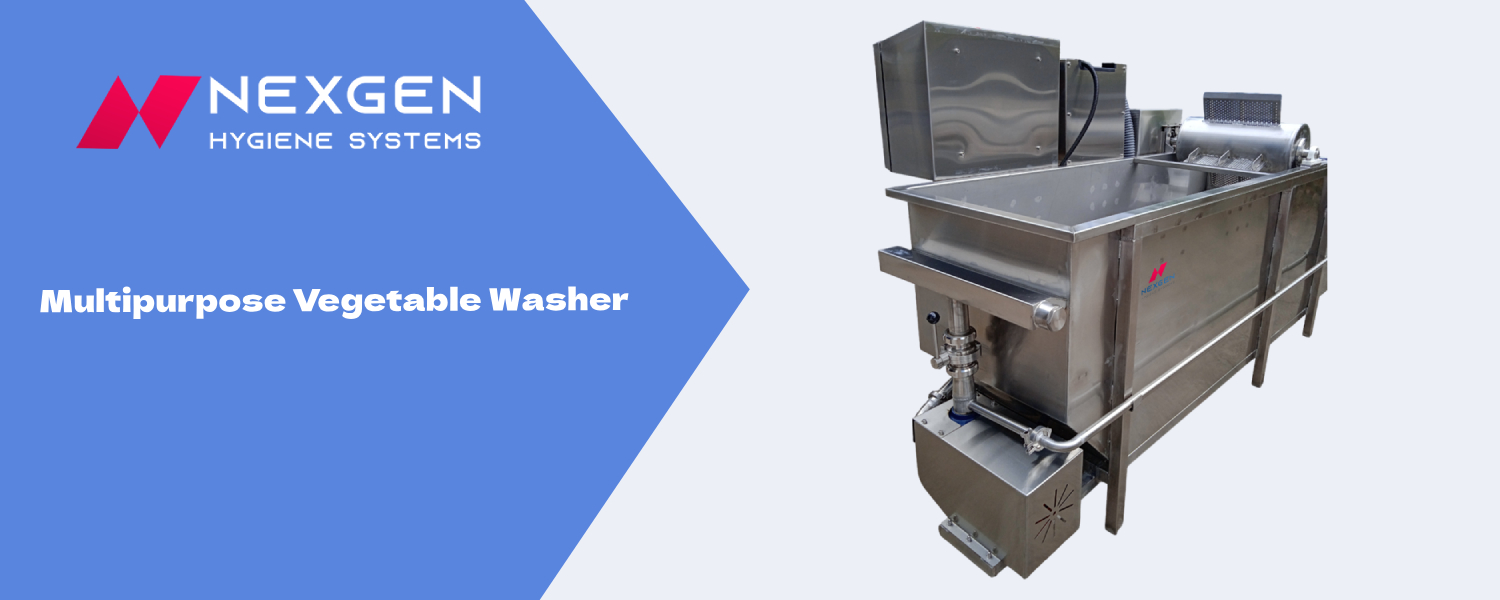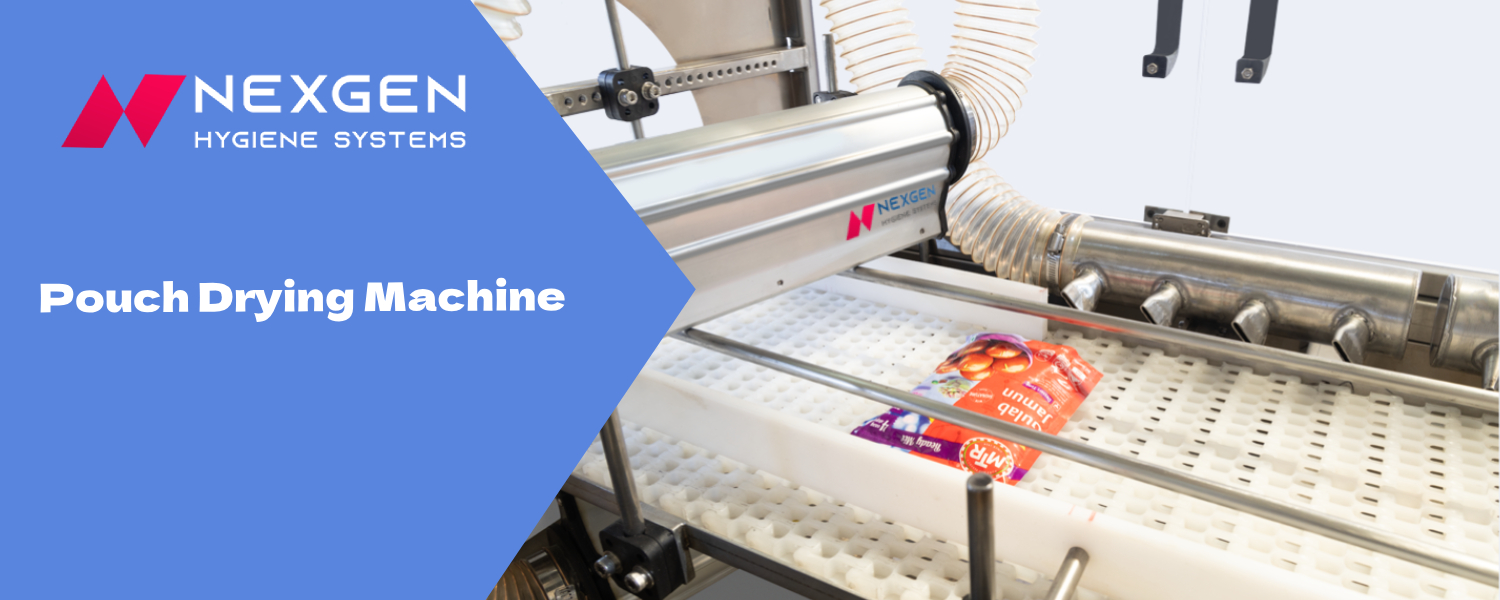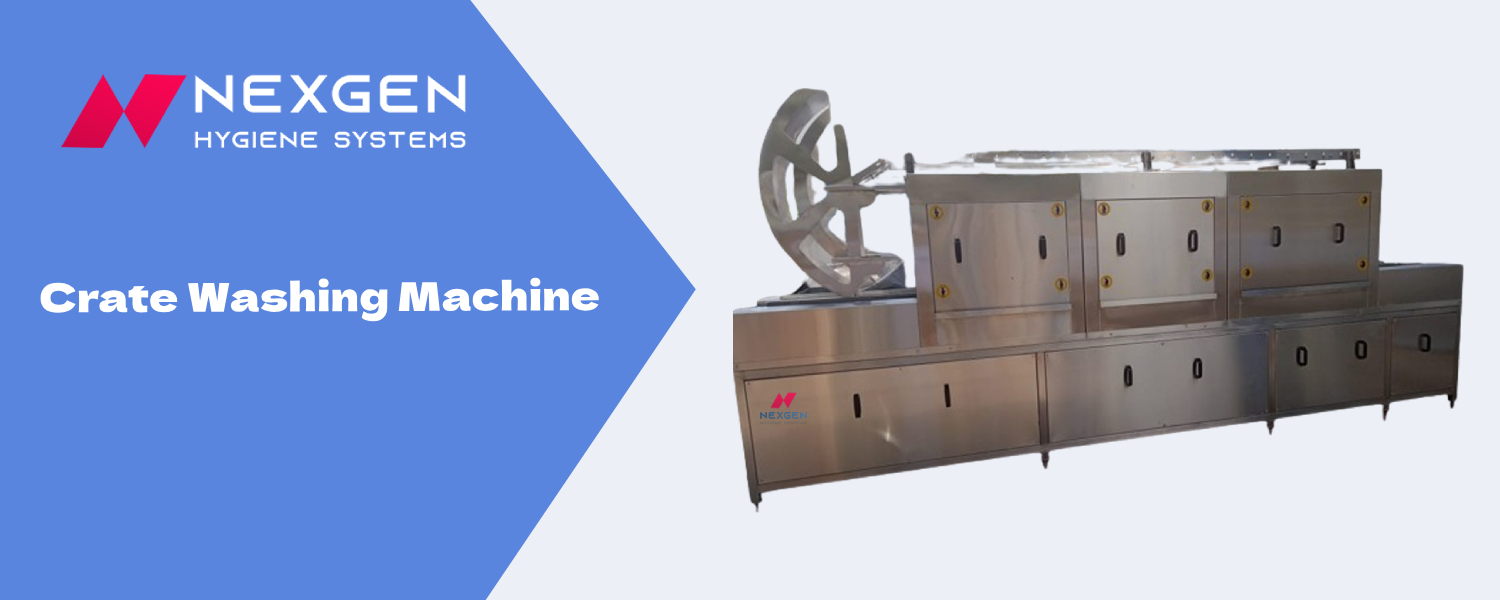From supermarket-ready salads to ready-to-cook mixed vegetables, the demand for pre-packaged meals is on the rise. But behind every neatly sealed pack is a complex production line that must handle large volumes of perishable goods—accurately, quickly, and without compromising on hygiene.
That’s where food processing machines step in. They’re not just add-ons; they’re the backbone of any efficient meal production line.
At Nexgen Hygiene Systems, we work with food processors of all sizes, helping them upgrade their output and quality using machines designed specifically for washing, cutting, peeling, drying, and handling vegetables in bulk.
If you’re struggling with high labour costs, inconsistent cuts, or time lost during cleaning, this guide is for you.
Why Pre-Packaged Meals Need Smarter Equipment
Let’s face it—manual prep might work in a small kitchen, but it’s a bottleneck in a production unit.
Whether you’re dealing with onions, leafy greens, or mixed vegetables, every extra minute spent peeling, washing, or drying eats into your production schedule. And every inconsistency in cut size or moisture level increases your chances of product rejection, especially in packed meals with tight shelf-life expectations.
That’s why food companies are investing in machinery that can handle:
- Bulk washing with controlled hygiene
- Precision cutting for uniform cooking and presentation
- Moisture removal for longer-lasting freshness
- Reduced wastage and manual handling
Let’s break down how each type of machine contributes to improving output.
Cleaning with Confidence
Recommended Equipment: Multipurpose Vegetable Washer

Cleaning isn’t just about removing dirt—it’s about meeting hygiene regulations and giving your finished product a clean starting point.
The Multipurpose Vegetable Washer at Nexgen uses water turbulence and spray systems to clean vegetables thoroughly, reducing microbial load while saving water. It’s suitable for everything from carrots and potatoes to leafy greens and herbs.
If you’re working with certifications like FSSAI or export-ready compliance, consistent washing is non-negotiable.
Handling Leafy Greens Without Damage
Recommended Equipment: Leafy Vegetable Cutting Machine
Leafy vegetables are delicate. Manual handling often leads to bruising and wastage, especially when volume increases.
The leafy vegetable cutting machine ensures uniform cutting of greens like spinach, coriander, or lettuce—without compromising their freshness or texture. For pre-packed salads and garnishes, this is a game-changer.
It’s no surprise that leading food processing machine manufacturers include this as a go-to system for salad and fresh meal brands.
Precision Cuts for Cook-Ready Mixes
Recommended Equipment: Vegetable Dicing Machine & Food Cutting Machine

Whether it’s cubed potatoes, sliced onions, or diced carrots—uniform cuts mean faster, even cooking, better appearance, and easier packaging.
Nexgen’s vegetable dicing machine and food cutting machines are built to handle heavy-duty output with minimal manual adjustment. They’re ideal for bulk processors supplying frozen packs, hotel kitchens, or retail-ready mixed veg.
And if you’re working with root vegetables, our machines ensure speed without jamming or frequent cleaning interruptions.
Say Goodbye to Hand Peeling
Recommended Equipment: Onion Peeling Machine
Peeling onions manually isn’t just inefficient—it also leads to inconsistent results and unnecessary waste. Not to mention the time lost in a tear-filled environment.
Our onion peeling machine uses compressed air and smart handling to peel onions cleanly and quickly. No blade contact, no mess, and no rework. This alone can cut hours off your prep schedule in high-volume kitchens and production lines.
Drying Matters More Than You Think
Recommended Equipment: Centrifugal Dryer & Pouch Drying Machine

Excess water is one of the most common reasons for soggy, short-lived pre-packed vegetables.
After washing and cutting, vegetables often carry surface moisture, which affects shelf life and packaging. That’s where the centrifugal dryer steps in. It removes water using high-speed spinning—ideal before packing or freezing.
For units handling vacuum or heat-sealed packs, the pouch drying machine ensures your labels stick, outer cartons remain dry, and no droplets affect the appearance or hygiene of your product.
This equipment is especially useful for ready-to-eat and retail-ready segments where shelf appeal is everything.
Don’t Forget the Crates
Recommended Equipment: Crate Washing Machine

Clean vegetables don’t stay clean if your storage and transport crates aren’t. It’s a detail many processors overlook.
Nexgen’s crate washing machine automates crate hygiene, helping plants meet food safety standards while reducing manual cleaning time. It’s especially useful for facilities that reuse crates across multiple production zones.
Real Benefits for Real Production Challenges
So, what do all these machines actually solve?
- Higher Output – Machines process faster and longer than human labor
- Better Consistency – Uniform cuts, clean vegetables, and accurate batch sizes
- Lower Rejections – Moisture-controlled packs last longer and look better
- Improved Hygiene – Less handling = lower contamination risk
- Reduced Labor Dependency – Fewer people needed for repetitive or risky tasks
And when these systems are sourced from trusted commercial kitchen equipment manufacturers or industrial kitchen equipment manufacturers like Nexgen, you also get machines that are built to last—designed for easy cleaning, maintenance, and scale.
Final Thoughts
When you’re producing thousands of meal packs a day, small issues become big fast. A delay in washing, an inconsistent cut, or too much moisture in a pouch can ripple through your entire line.
That’s why investing in the right vegetable processing machines isn’t just about convenience—it’s about staying competitive in a fast-moving market.
Whether you’re upgrading from semi-manual processes or building a new line, Nexgen Hygiene Systems can help you set up machines that improve output, hygiene, and bottom-line results.
Need help designing your vegetable processing flow? Let’s talk.
Request a QuoteFAQs
What does a vegetable processing machine actually do?
It automates key prep tasks like washing, peeling, cutting, and drying vegetables. This helps reduce manual effort and speeds up production while maintaining hygiene and consistency.
Which machine should I start with if I’m building a new pre-packaged meal line?
Start with a vegetable washer and cutting machine. These two alone can eliminate most of the bottlenecks in prep and dramatically improve your output.
What’s the difference between a vegetable dicing machine and a food cutting machine?
A dicing machine gives you precise cubes and uniform shapes. A general-purpose food cutter is more versatile, but may require adjustments for different cut types.
How does an onion peeling machine work without damaging the vegetable?
Nexgen’s onion peeler uses compressed air—not blades—so the peel is removed gently without cutting into the onion or causing waste.
How much training is needed to operate these machines?
Very little. Most machines are designed to be user-friendly. Operators typically get the hang of it after a short demo and trial run.
What kind of maintenance do these machines need?
Basic daily cleaning and occasional part checks. Nexgen’s machines are built for industrial use, so they’re easy to clean and maintain with minimal downtime.
Are these machines suitable for export-ready or HACCP-certified facilities?
Yes. Nexgen machines are built with hygiene, durability, and compliance in mind—making them ideal for facilities that meet FSSAI, HACCP, and export standards.
How do I know if my crates are compromising product hygiene?
If you’re reusing crates and not washing them properly, there’s a high chance of contamination. A crate washing machine solves that without needing extra labor.
Can I buy just one machine or do I need to commit to a full line?
You can start with one. Most clients begin with washers or cutters and gradually add dryers or automation modules as their output scales.
